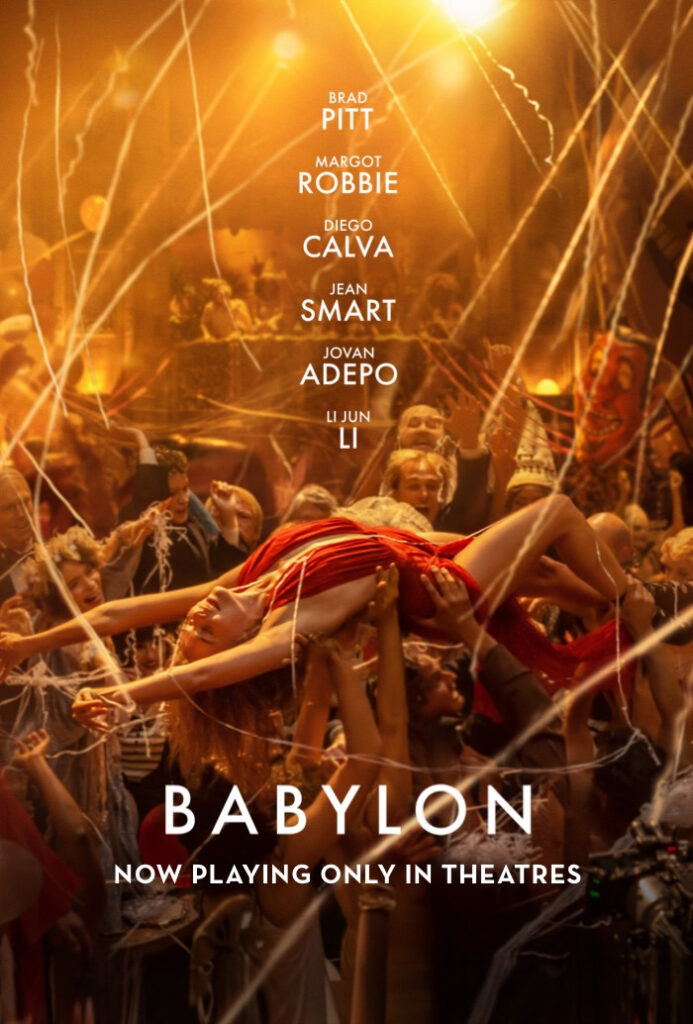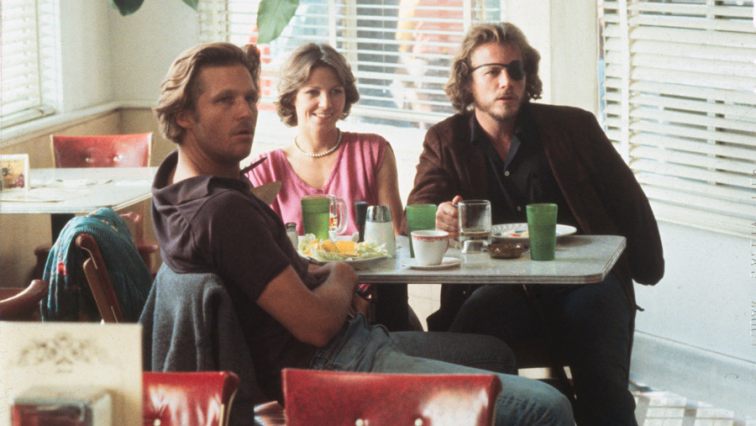 “I just spent three hours witnessing a big eyepopping spectacle that transports the viewer to a strange world full of utterly alien life.
“I just spent three hours witnessing a big eyepopping spectacle that transports the viewer to a strange world full of utterly alien life.
— My initial Facebook post made last night immediately after seeing Babylon
All right, now for a couple thoughts on Babylon in the bleary-eyed morning after.
As my lovely viewing companion Anne said when the credits started to roll, there’s a good movie in there somewhere. There are moments in this film that approach genuine brilliance… moments of breathtaking beauty and infectious enthusiasm. There’s also a lot of moments when I wonder what in the hell I was watching and why I was doing this to myself. The first 10 minutes of the film are the acid test, I think, for whether you’re going to be able to stomach the rest of it. I predict that a sizable number of my readers won’t pass that test.
The problem is that in trying to show the decadence of the era he’s depicting, writer-director Damien Chazelle gets swept up in self-indulgent excess himself. The movie is too long, too graphic, too frenetic, too many subplots, too jam-packed, too… just too. It’s also self-aware in a way that occasionally seems more cloying than clever. I started to notice the parallels to Singin’ in the Rain fairly early on. (Babylon is about the moment when talking pictures upended the industry and countless lives virtually overnight.) Nothing wrong with that, nobody says you can’t revisit the same general territory occupied by a beloved classic. But then the film has the audacity to actually reference Singin’ in the Rain — as in depicting an actual musical number where people are singing the song — and, as a lover of old movies, I couldn’t help thinking, “Oh, this guy is cheeky… ” But considering there had been some earlier references to other classic films in kind of a what-if-this-happened-differently sort of way, I let it go. I even briefly considered the idea that perhaps this movie was happening in some kind of parallel universe. Then in the film’s denouement, Chazelle uses clips from Singin’ in the Rain and I thought… well, by that point, I really didn’t know what to think. I’d been battered into submission by the too-ness of it all. If the creator of Babylon is so aware that he’s making a pastiche of one of the greats, I suppose you can’t fault him for it. Or can you? I just keep going back and forth on that question. Does this film work or not?
The frustrating thing is that Chazelle really gets something about Hollywood. About the idea of Hollywood and movies and what they mean to a certain type of movie fan. He understand the romantic pull of a lost era. And he understands the reasons why people dream of a career in movies and how hard it is to let go when that career runs its course. (In a way, Babylon is complementary to another film I recently saw, 5-25-77, which is also about the all-consuming drive to make movies and more importantly the reasons behind that drive.) Babylon is an ambitious film about ambitious people, and it’s a compelling film, but much like the Hollywood of the late silent era — about to brought low by a number of scandals that led to the oppressive Production Code, as well as a sea change in technology and public tastes — it’s kneecapped by its own base impulses.
I will say this, though: if you’re remotely interested in this movie after reading all this, you need to see it for Brad Pitt. Even now, decades after his big break in Thelma & Louise, I occasionally see people saying that he’s nothing more than a pretty face. I’m here to tell you that this is simply not true, and that he delivers a career-defining performance in Babylon. Possibly an Oscar-winning performance. There is one scene in particular where he exudes such pain without ever saying a word that I defy anyone to not feel absolutely heartbroken for him. Seriously, he is that good.
So, bottom line, would I recommend Babylon? That’s a hard call. The movie is unquestionably a hot mess. And yet… I’m still thinking about it this morning and that says something to me. I can’t deny that I did enjoy it — or at least parts of it — very much. So I would say that if the subject matter interests you… if you love movies, specifically old movies… if you’ve ever dreamed of making movies yourself or if you’ve ever felt any romance at all toward “Hollywood” as a concept… then give it a try. Just be warned that it’s going to be something of a rough ride. If you can make it through that first 10 minutes…











